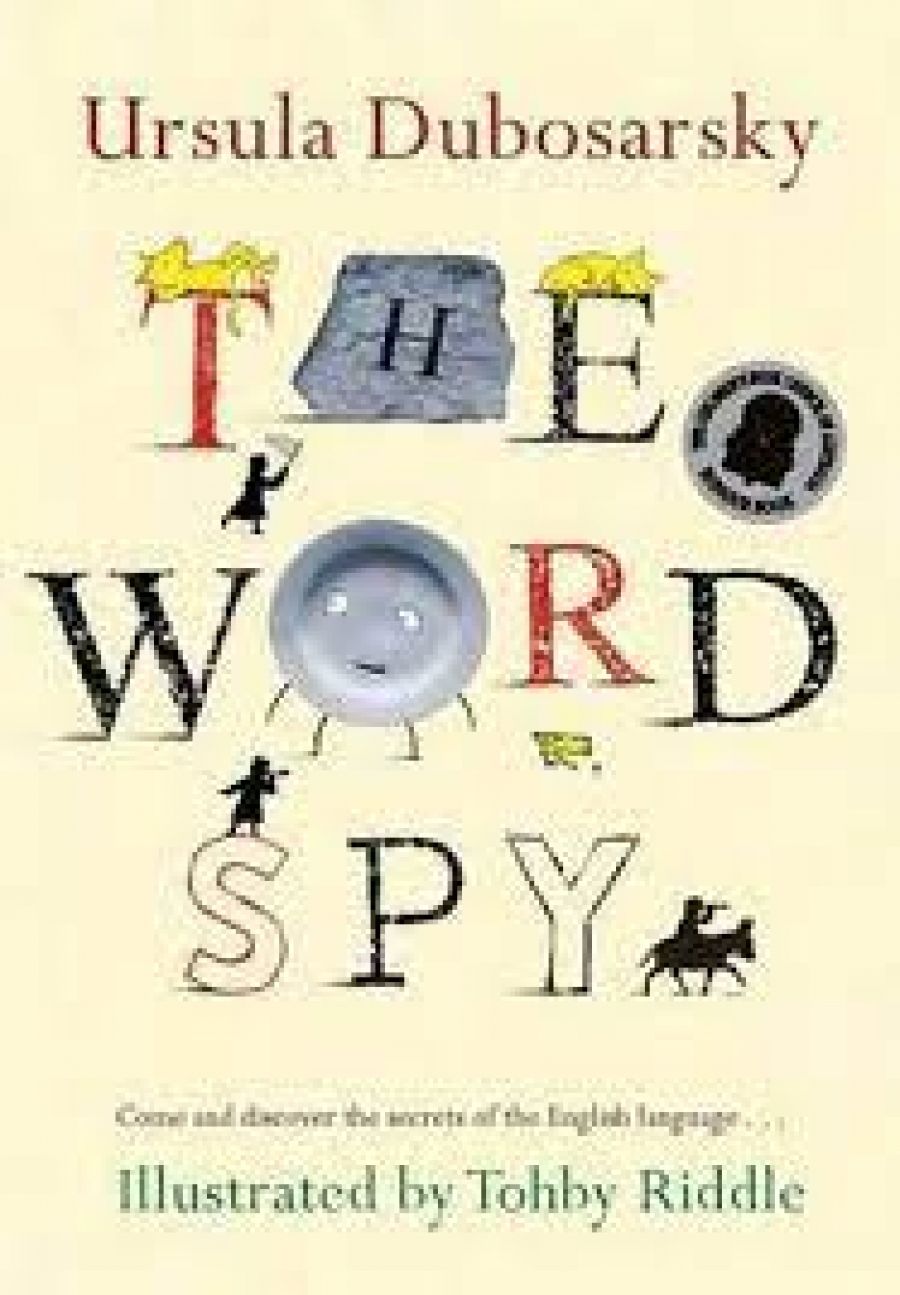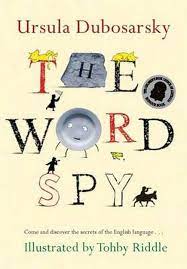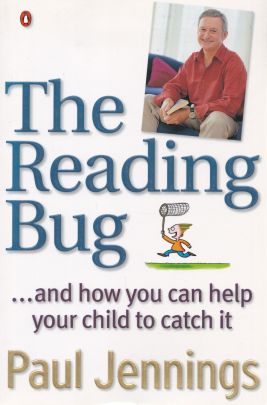
- Free Article: No
- Contents Category: Children's Non-Fiction
- Custom Article Title: Happy ending
- Review Article: Yes
- Article Title: Happy ending
- Online Only: No
- Custom Highlight Text:
Ursula Dubosarsky is an original and sensitive author of books for children and young adults, while the inimitable Paul Jennings is the author of many books for younger readers. His books engage readers through their hilarious plots and the insight he brings to the reading experience. Dubosarsky has won many literary awards for books such as the haunting The Red Shoe (2006), while Jennings, whose books have hooked many a reluctant reader, has won numerous children’s choice and other awards for books, including Unreal! (1985). They also have in common a driving passion for words, language, literature, reading and children. Both authors have poured this passion into these non-fiction releases, The Word Spy and The Reading Bug and How to Help Your Child Catch It.
- Book 1 Title: The Word Spy
- Book 1 Subtitle: Come and discover the secrets of the English language
- Book 1 Biblio: Penguin, $24.95 hb, 256 pp
- Book 1 Cover Small (400 x 600):

- Book 1 Cover (800 x 1200):

- Book 2 Title: The Reading Bug and How to Help Your Child Catch It
- Book 2 Biblio: Penguin, $29.95 pb, 272 pp
- Book 2 Cover Small (400 x 600):

- Book 2 Cover (800 x 1200):

In her first non-fiction title, Dubosarsky takes the reader on an engaging and entertaining journey of discovery through both the history of the English language and the delights of simply playing with words. In this affectionate look at the foibles and eccentricities of English, Dubosarsky’s enthusiasm bounces off every page. This infectious book will help children understand why reading and writing in English is sometimes so difficult, although it may not completely alleviate the frustrations provided by English spelling, with its many exceptions, homonyms, silent letters and other traps for the novice.
The Word Spy is cleverly designed so that each chapter begins with a chatty letter, clearly aimed at primary schoolchildren, which introduces the concepts to be covered in a way that draws in the reader. A secret coded message at the end of each chapter acts not only as a stimulus to keep reading and exploring language but also as a form of reinforcement, so that children can immediately apply the knowledge and skills they have just imbibed. As well as word games, interesting facts and Dubosarsky’s funny asides and confiding tone, children will be entertained throughout the book by Riddle’s somewhat old-fashioned illustrations and cartoons, and by the clever design.
Dubosarsky delves into everything from palindromes and punctuation to euphemisms and emoticons. She continually makes things relevant to the child reader by referring to the familiar, such as the Internet, messaging and popular culture. There are examples from not only great writers such as Shakespeare and Dickens but also film and television, including Kath and Kim and The Simpsons. The final chapter deals with the language of texting, presenting it as yet another stage in the constantly evolving history of the English language.
Notwithstanding the exclusion of Canberra in the mnemonic for the capitals of Australia, this is an unreservedly excellent text on the delights of exploring that most important of all reading tools, the English language. The Word Spy is a great interactive resource for children to read and enjoy for themselves, and for parents and teachers to dip into for inspiration and examples.
Paul Jennings has updated his 2003 book, The Reading Bug, adding a chapter on books for boys and an impressive list of ‘brilliant books’. This list covers books for babies, non-fiction books, picture books and novels for all ages, and presents a wonderful mix of classic and modern titles, with a refreshingly Australian bias. Jennings, a special education teacher and speech pathologist, as well as a writer who has sold more than eight million books, applies both his teaching and writing skills to this book. Jennings’s successful writing career, along with the recent win by Sonya Hartnett of the lucrative Astrid Lindgren Award, should provide inspiration for every aspiring or practising Australian children’s writer.
The Reading Bug is a practical and highly readable guide for parents and teachers alike. It provides information on how to encourage children to learn to read successfully and joyfully. Jennings humanity and sense of humour often surface amid practical suggestions about how to engage children with books. His underlying message is that reading to children is ‘an act of love’. But even love sometimes needs a hand, and Jennings provides it in the form of informed discussions about reading tools and the inclusion of useful reading lists at seminal points in the text. These lists cover the full age range, from babies through to teenagers. Jennings’s text is ably supported by Andrew Weldon’s funny and pertinent cartoons.
Amid the discussion of reading schemes, phonics versus reading for meaning, readers versus ‘real’ books, the importance of reading aloud to children on a daily basis, visual literacy and dealing with reluctant readers – especially boys – Jennings also includes some useful tips for writers of stories for children, using his own books as examples.
Like Dubosarsky’s The Word Spy, The Reading Bug is written from the heart by a practitioner whose life revolves around language and books. These two authors show in every sentence that they are writing about something which they believe in deeply and which they want to share with others so that, like them, children can become enthusiasts. Jennings ends The Reading Bug with a comment which is pertinent to the underlying aim of both books: ‘Our happy ending is to know that no matter where they go, a child lost in a book will always find their way home.’


Comments powered by CComment